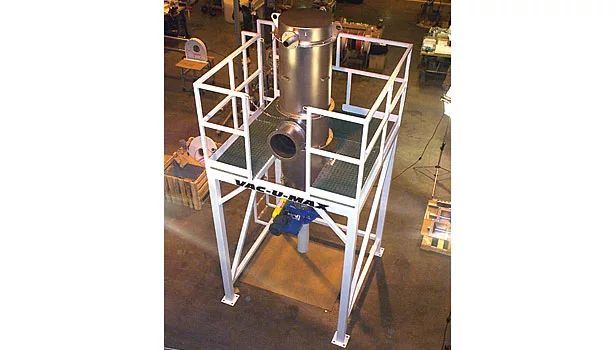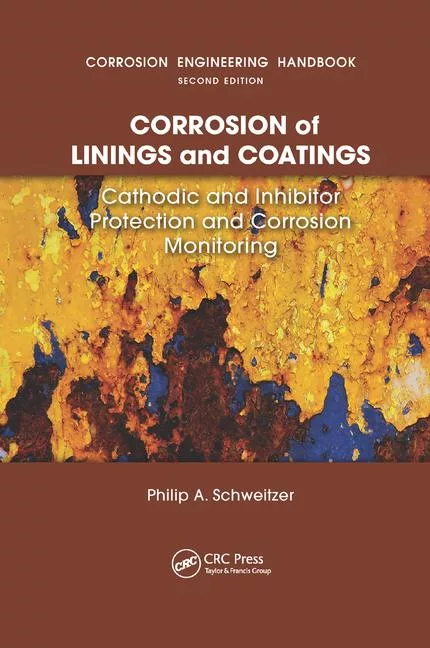Protection from Combustible Dust Explosions




Even without a sufficient vacuum cleaner for industrial environments in 1922, the authors still warned against using brooms and compressed air in housekeeping practices since those methods often caused dust to be suspended in the environment during cleaning and could itself ignite, or would settle back onto floors, equipment and beams, leading to potential secondary explosions later.
Primary dust explosions occur when combustible dust is present and forms a dust cloud (in sufficient amounts) in an enclosed environment, with an ignition source and oxygen. Bill Stevenson, Vice President of Engineering at Cv Technology and NFPA 654 committee member, says, “the explosion is caused by the rapid pressure rise as a result of the rapid burning of the dust cloud. So it has to be in an enclosure. If it were outside you’d just have a big flash.” (Cv Technology is a Florida-based company dedicated to the prevention, protection and mitigation of industrial dust explosions and related fires). Stevenson further explains that if there was a layer of combustible dust sitting on a desk, “you could get it to burn by putting a flame to it, but it wouldn’t explode. If you took the torch away it would smolder and most would self extinguish. But, if you take the same dust, throw it in the air and then light it on fire, it would literally blow up in your face,” he says.
Catastrophic secondary explosions occur when the force from the primary explosion dislodges fugitive dust, producing more dust clouds and creating a domino-type effect that can cause further explosions. If you took that same dust smoldering on the desk and waved a piece of paper to make the particles airborne, a dust cloud could form and explode.
According to an NFPA Fact Sheet titled, U.S. Industrial and Manufacturing Property Structure Fires, “U.S. fire departments responded to an estimated average of 10,500 structure fires in industrial and manufacturing properties per year in 2003-2006,” averaging 29 fires per day in the industrial sector. Of those fires, 29 percent involved shop tools or industrial equipment, and the manufacturing area was the leading origin of the fires.
Controlling the Explosion Pentagon
The explosion pentagon includes the three elements of the fire triangle − fuel (combustible dust), ignition source (heat) and an oxidizer (air) − but needs two additional elements, dispersion of dust particles (in sufficient quantity and concentration) and the confinement of the dust cloud (vessel, area or building) (Figure 1).
If one of the elements is missing, a fire or explosion cannot occur. While it is difficult to remove air and fuel from the triangle, the first rule of fire prevention, and therefore explosion prevention, is to eliminate the ignition source. While most machinery manufacturers design equipment with safety in mind, mechanical equipment is capable of malfunctioning, overheating and causing ignition.
Although every precaution is taken to eliminate ignition sources to prevent fires, and dust collection equipment is designed to safely contain most of the dust in the plant, manufacturers must make housekeeping for fugitive dust equally important in order to prevent dust explosions.
Industrial vacuum cleaners to control fugitive combustible dust should be suitable for use in Class II Div 2 areas, which can be defined as those areas made hazardous by the presence of combustible dust where dust is not normally suspended in an ignitable concentration (but may accidentally exist) and/or where dust layers are present.
Vac-u-Max, a pioneer in industrial vacuum cleaning and pneumatic conveying since 1954, makes a line of combustible dust vacuums that are redundantly grounded and ideal for combustible dust.
“Vacuum cleaners in particular are vulnerable to ignition,” says Stevenson. “Vac-U-Max takes extraordinary care to make sure there is no chance for the product to come into contact with anything ignitable.”
Any time there is powder flowing in one direction through a plastic vacuum-cleaning hose it can create a significant static electric charge. In addition, there is the possibility that there may be static electricity build-up on individual dust particles. If a charged, ungrounded hose used to vacuum combustible dust powder were to contact an object that was grounded, the static electricity could then arc and trigger a violent explosion. This is why OSHA has issued numerous citations for using standard vacuum cleaners where Class II Div 2 equipment is required.
The Right Tool for Combustible Dust
Bill Bobbitt of Bobit Associates Environmental Systems, who has been working in the clean air industry for over 25 years, says, “I always tell my clients, it’s not a matter of if, but when. Conditions have to be perfect, and that ‘when’ can be 30 years from now, or it could be next week. But if you eliminate the fugitive dust, no secondary dust explosion can be created,” he says.
Bobbitt sees a lot of standard shop-type vacuums in plants. “There are so many problems with them. They themselves are hazards in an industrial environment,” he says. They are not grounded or classified for Class II Div 2 areas; they shock workers; they clog easily, which causes the workers to not want to use them; and if workers don’t use them, fugitive dust accumulates in the plant.
Employing an industrial vacuum cleaner that is redundantly grounded in five different ways, “eliminates the possibility of any kind of explosion from the vacuum,” says Bobbitt. Although Vac-u-Max does make electric vacuums designed for Class II Div 2 environments, the most economical solution for cleaning combustible fugitive dust is its air-operated vacuums.
Beyond the fact that air-operated vacuums use no electricity and have no moving parts, the first of the five ways that Vac-u-Max vacuums are grounded begins with the air line that supplies the compressed air to the units. Because most plants have compressed air lines made from iron that conducts electricity, the company’s air-operated vacuums use static-conductive high-pressure compressed air lines. In addition to the static-conductive air lines, static-conductive hoses, filters and casters are employed to further reduce risk. A grounding lug and strap that travels from the vacuum head down to the 55-gallon drum eliminates the potential for arcing.
Air-operated vacuums for combustible dust are safer in terms of grounding. They also work more efficiently in industrial environments. Bobbitt says on a recent visit to a coal-fired electric power plant he was shown five different electric vacuums sitting in a warehouse not being used. Workers complained that after 20 minutes the filters would bind and they just didn’t want to use them because they would have to lift the head from the vacuum and tap the cake off before they would get any more suction.
Bobbit says the power plant and two sister facilities “now use an air-powered Vac-u-Max model with a pulse cleaning system on the filters, that releases the dust from the filter with the push of a button.”
Compliance When Regulations Are Not Clear
Fugitive dust “is a moving target that changes depending on the nature of the process and how well plants manage to keep the dust contained,” says Stevenson. Most NFPA guidelines for combustible dust state that a layer of dust the thickness of a paperclip is enough to cause a significant secondary explosion. The problem he says, “is that it doesn’t account for the different Kst values (bar•m/sec) between different dusts. Some are more reactive than others. Some are more easily suspended into a cloud. Some tests found that depending on the type of dust, even half of the thickness of a paper clip would be too much.” Kst values classify dusts according to their explosivity − the rate of pressure rise of a dust in the test vessel upon being ignited.
In situations where many different dusts are handled, testing all of them can be prohibitively expensive. For instance, in a high-performance plant where several different products are manufactured within the same facility, the dust in each area of the plant may have different Kst values. For this circumstance it is recommended to work with an expert in the field to select samples that represent the worst case.
This is why, Bobbitt says, that when you are dealing with explosive dust, you may need a Class II Div 2 vacuum in a non Class II Div 2 area. “You might have explosive dust in small quantities, and it might take a very hot and prolonged source of ignition, but with the new combustible dust initiative, facilities need to be very careful that they comply, because there are a lot of questions as to what compliance means.”
“Although the regulations for combustible dust aren’t really clear,” Bobbitt says, “I find that a lot of companies are simply just trying to get better at general housecleaning.”
Cv Technology’s Stevenson agrees. “The one thing you can do very simply and easily is to keep everything clean − it is as simple as that. If you clean the place up and protect your dust collectors, you’ve gone a long way toward minimizing the chance for an explosion, even if you do nothing else,” he says. n
For more information, call 1-800-VAC-U-MAX, ; e-mail info@vac-u-max.com or or visit www.vac-u-max.com.
Looking for a reprint of this article?
From high-res PDFs to custom plaques, order your copy today!







